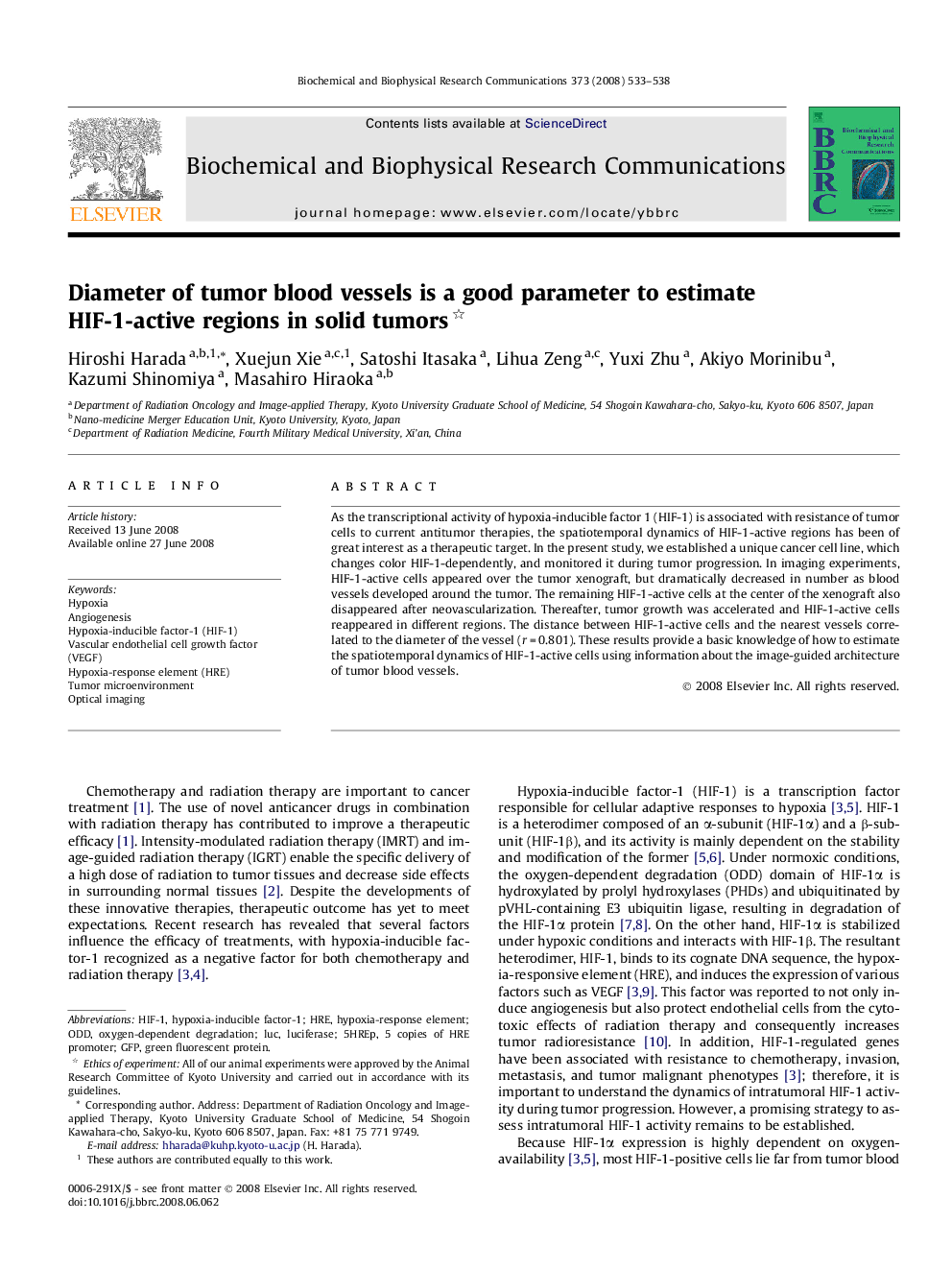| Article ID | Journal | Published Year | Pages | File Type |
|---|---|---|---|---|
| 10766660 | Biochemical and Biophysical Research Communications | 2008 | 6 Pages |
Abstract
As the transcriptional activity of hypoxia-inducible factor 1 (HIF-1) is associated with resistance of tumor cells to current antitumor therapies, the spatiotemporal dynamics of HIF-1-active regions has been of great interest as a therapeutic target. In the present study, we established a unique cancer cell line, which changes color HIF-1-dependently, and monitored it during tumor progression. In imaging experiments, HIF-1-active cells appeared over the tumor xenograft, but dramatically decreased in number as blood vessels developed around the tumor. The remaining HIF-1-active cells at the center of the xenograft also disappeared after neovascularization. Thereafter, tumor growth was accelerated and HIF-1-active cells reappeared in different regions. The distance between HIF-1-active cells and the nearest vessels correlated to the diameter of the vessel (r = 0.801). These results provide a basic knowledge of how to estimate the spatiotemporal dynamics of HIF-1-active cells using information about the image-guided architecture of tumor blood vessels.
Keywords
Related Topics
Life Sciences
Biochemistry, Genetics and Molecular Biology
Biochemistry
Authors
Hiroshi Harada, Xuejun Xie, Satoshi Itasaka, Lihua Zeng, Yuxi Zhu, Akiyo Morinibu, Kazumi Shinomiya, Masahiro Hiraoka,
